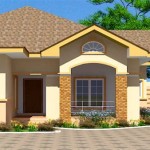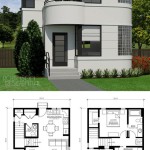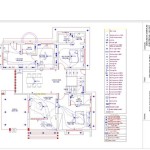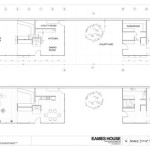Small House Floor Plans: Embracing Passive Solar for Energy-Efficient Living
In today's environmentally conscious world, small house floor plans that incorporate passive solar design principles are gaining popularity. These compact dwellings offer numerous advantages, including reduced energy consumption, enhanced comfort, and a positive impact on the environment.Understanding Passive Solar Design
Passive solar design is an architectural approach that harnesses the natural power of the sun to heat and cool a home without relying solely on mechanical systems. This is achieved through careful consideration of factors such as building orientation, window placement, insulation, and thermal mass.Benefits of Small House Floor Plans with Passive Solar
*Energy Savings:
By utilizing the sun's energy, passive solar homes can significantly reduce their reliance on conventional heating and cooling systems, leading to lower energy bills and a smaller carbon footprint. *Enhanced Comfort:
Passive solar design promotes a comfortable and stable indoor environment. Proper window placement and thermal mass materials help regulate temperature, minimizing drafts and temperature fluctuations. *Natural Daylight:
Large windows and strategic orientation allow for ample natural daylight, reducing the need for artificial lighting and creating a brighter, more welcoming living space. *Reduced Maintenance:
Passive solar homes often require less maintenance compared to conventional homes, as they rely less on mechanical systems that may require frequent repairs or replacements.Key Elements of Small House Floor Plans with Passive Solar
1.Building Orientation:
Orienting the home to face the sun's path ensures maximum exposure to sunlight during the heating season. In the Northern Hemisphere, this means facing south, while in the Southern Hemisphere, it's facing north. 2.Window Placement:
Large, south-facing windows capture the sun's heat and distribute it throughout the home. Overhangs or shading devices can be used to control solar gain during the summer months. 3.Insulation:
Proper insulation helps trap heat in the winter and keep the home cool in the summer, reducing the need for heating and cooling systems. 4.Thermal Mass:
Materials with high thermal mass, such as concrete or masonry, absorb and release heat slowly, helping to regulate indoor temperatures. 5.Open Floor Plans:
Open floor plans allow for better airflow and distribution of solar heat throughout the home.Conclusion
Small house floor plans that incorporate passive solar design principles offer a sustainable and energy-efficient approach to homeownership. By harnessing the sun's natural energy, these homes provide comfort, reduce energy consumption, and create a positive impact on the environment. Embracing passive solar design is a wise choice for those seeking a more sustainable and comfortable living experience.
Passive Solar House Plan 2 Bedrms Baths 1418 Sq Ft 146 2710

10 Solar Passive Houses Ideas House Plans

Solar Adobe House Plan 1870

Deltec Homes Renew Collection Ridgeline B 1604sf Passive Solar Layout Vaulted Ceilings High Clere House Plans Prefabricated Houses Dream

Affordable Passive Solar Planbook Appalachian Energy Center

Passive Heating Yourhome

Green Passive Solar House Plans 3

Small Gable Roof Passive House Plan 2 Bedroom Cottage Home Design

Earth Sheltered Passive Home Plan

Solar Home Modern Passive Plans Log Floor Cabin House








